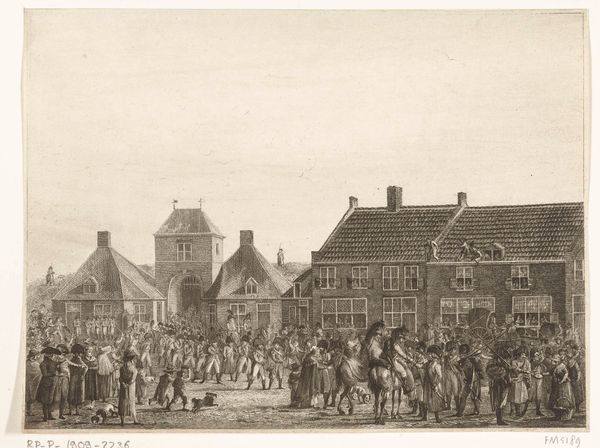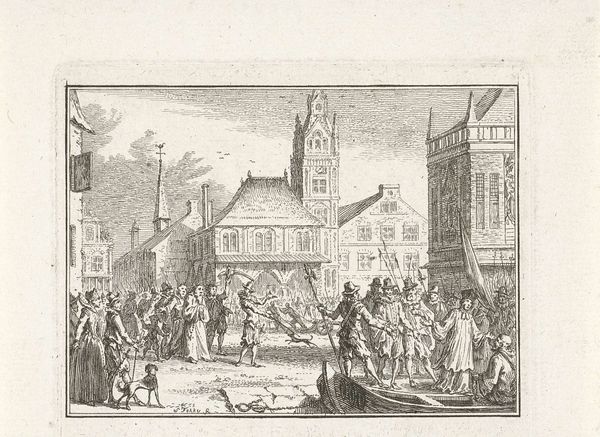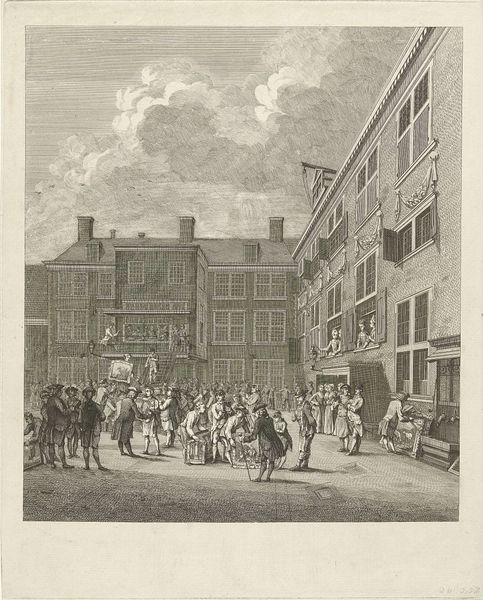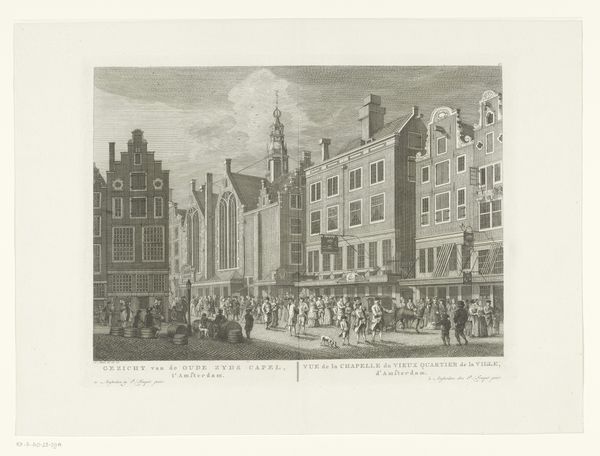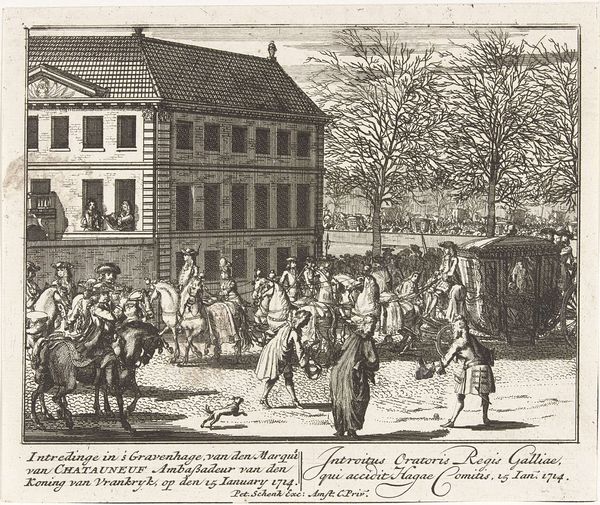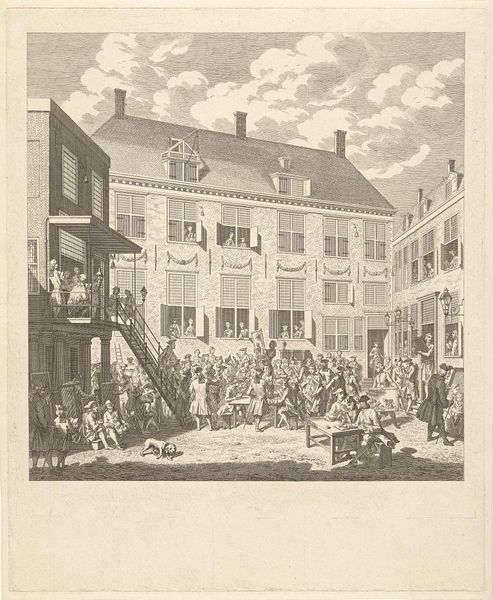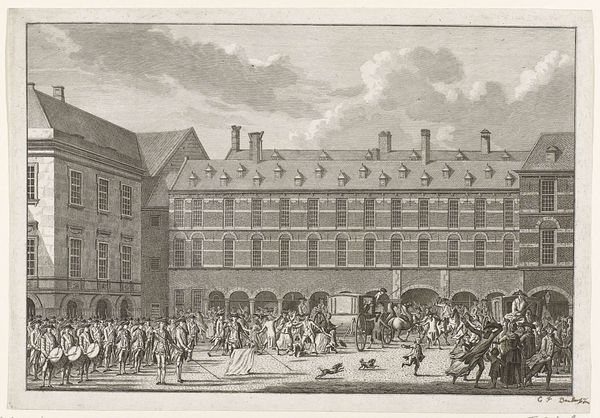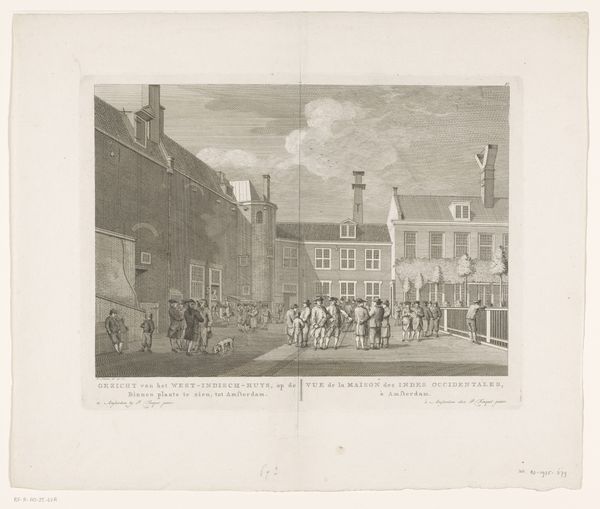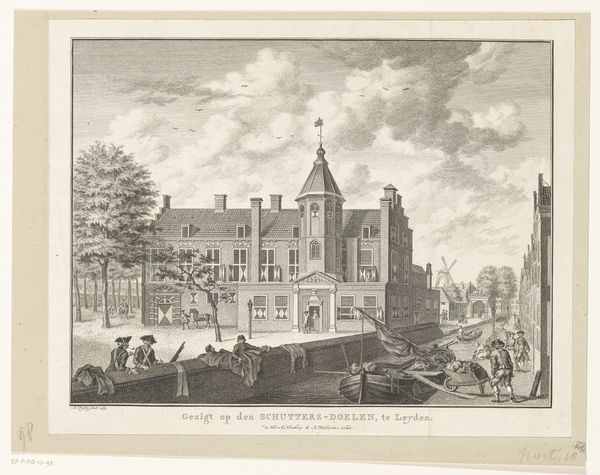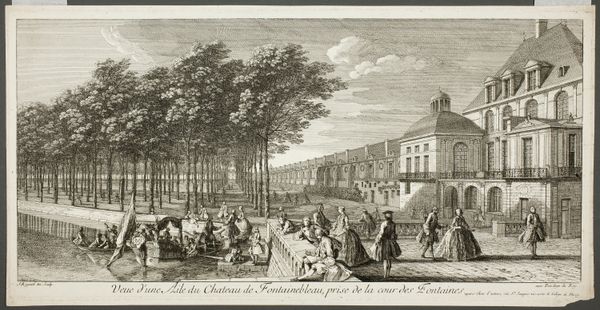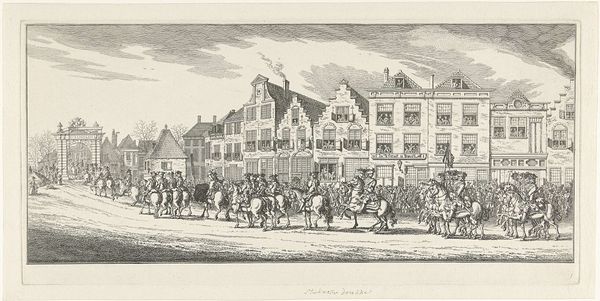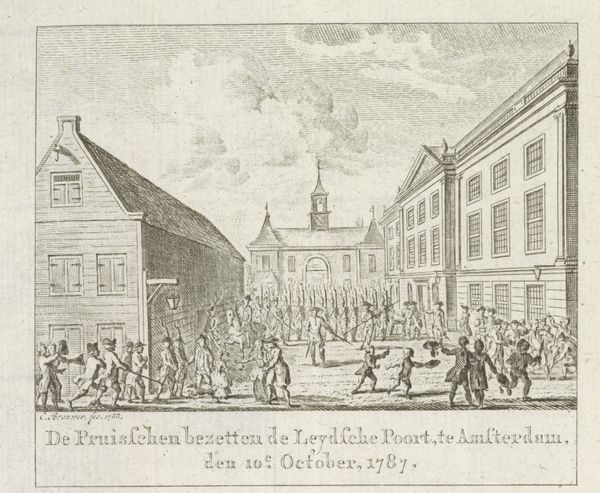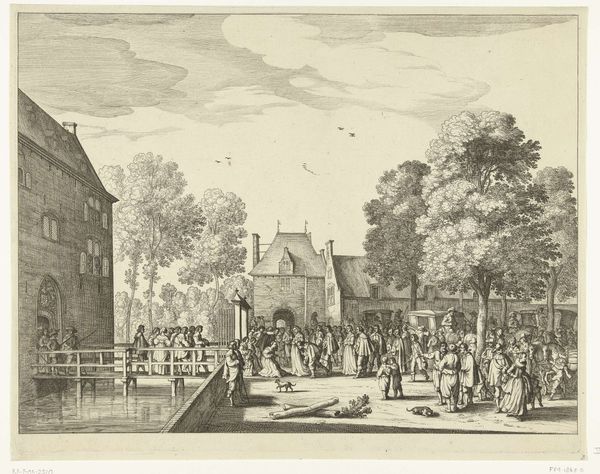
print, engraving
#
neoclacissism
#
narrative-art
# print
#
figuration
#
cityscape
#
history-painting
#
engraving
Dimensions: height 378 mm, width 475 mm
Copyright: Rijks Museum: Open Domain
Curator: Welcome. We’re looking at Jan Anthonie Langendijk Dzn’s print, “Bezwijken van de bekisting te Gorinchem, 1809,” created in that very year. Langendijk, as you may know, often documented historical events. This one depicts… chaos. Editor: Yes, the mood is immediately arresting! It’s dynamic, almost violent, but rendered in a very classical, controlled style. I’m struck by how this disastrous collapse, presumably resulting in deaths or injuries, is so meticulously depicted. Curator: The composition certainly supports your point about control. Note the rigid architecture juxtaposed with the spiraling turmoil at street level. Langendijk has skillfully used light and shadow to emphasize the human drama, but within the bounds of neoclassical ideals of order. Editor: Right. But is the disaster simply "human drama" or an instance of larger social issues at play? Consider Gorinchem's political standing in 1809, with French occupation looming large. Doesn’t this event underscore human vulnerability and collective anxieties about external forces destabilizing even the sturdiest structures? Curator: It could indeed. Formally, the etching relies heavily on line and contour. The figures are defined with clarity, exhibiting anatomical awareness reminiscent of classical sculpture. Observe, for instance, the man on the lower left struggling to lift a part of the fallen structure; his strained posture conveys strength, but the chaotic lines surrounding him undo this controlled muscularity. Editor: The attire is key here too. These aren’t idealized figures in togas; their contemporary garments place them firmly within a specific historical moment. Ordinary folk responding to a catastrophe that has political implications because such constructions held up civic, or military buildings. Curator: What a great interpretation. Note how the artist also uses the sharp lines of the architecture to direct our gaze. The buildings create an almost claustrophobic feeling, framing the action as if to emphasize the event's localized intensity. Editor: Precisely, and I wonder if that architectural backdrop isn’t intended to be a pointed reminder that buildings don't collapse of their own accord, that human engineering – and its failings – have tangible consequences for those marginalized by class and social structure. Curator: Fascinating insight. By interweaving narrative, history, and visual design, the piece embodies a confluence of form and content that resonates on several levels. Editor: Yes, seeing the artist frame disaster also opens paths to contemporary reflections on similar precarious, unequal structures—ones that shape the way our world persists to this day.
Comments
No comments
Be the first to comment and join the conversation on the ultimate creative platform.

